Smart rings are the new smart wearable that’s gaining traction. They aren’t cheap as seen from the Oura ring, but the RingConn is pricing theirs to be the most affordable in the market at US$279. If you’re interested in tracking your health and activity, smart rings are an easy way to start especially if you have a watch hobby that usually rejects the wear of smartwatches.
Design and build quality
Ringconn opted for a squarer shaped ring design as opposed to rounder look, which gives it a unique look over other brands. RingConn comes in three colours – (1) Moonlit Silver, (2) Midnight Black, and (3) Pale Gold. The unit I have is the silver model which comes in a matte finish. RingConn is crafted from titanium, making it exceptionally lightweight, weighing merely 4-5 grams for my size 10 ring. It also boasts an IP68 rating, allowing you to even swim up to 50 meters, so you’d have no problem with showering, handwashing, and sweating.
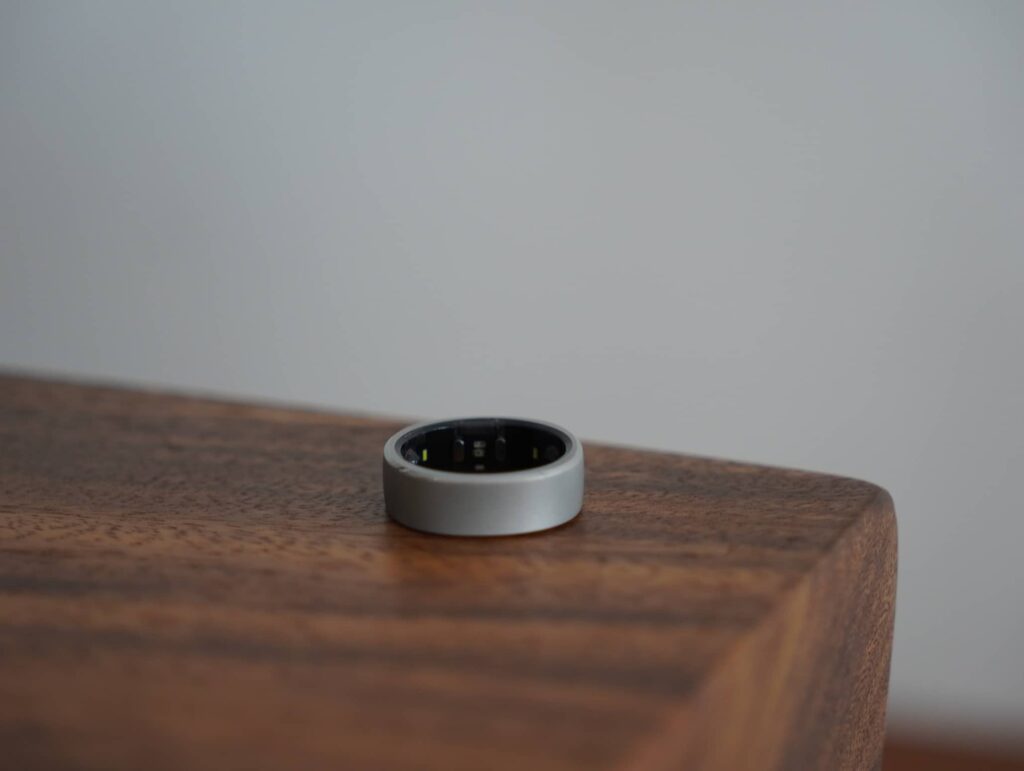
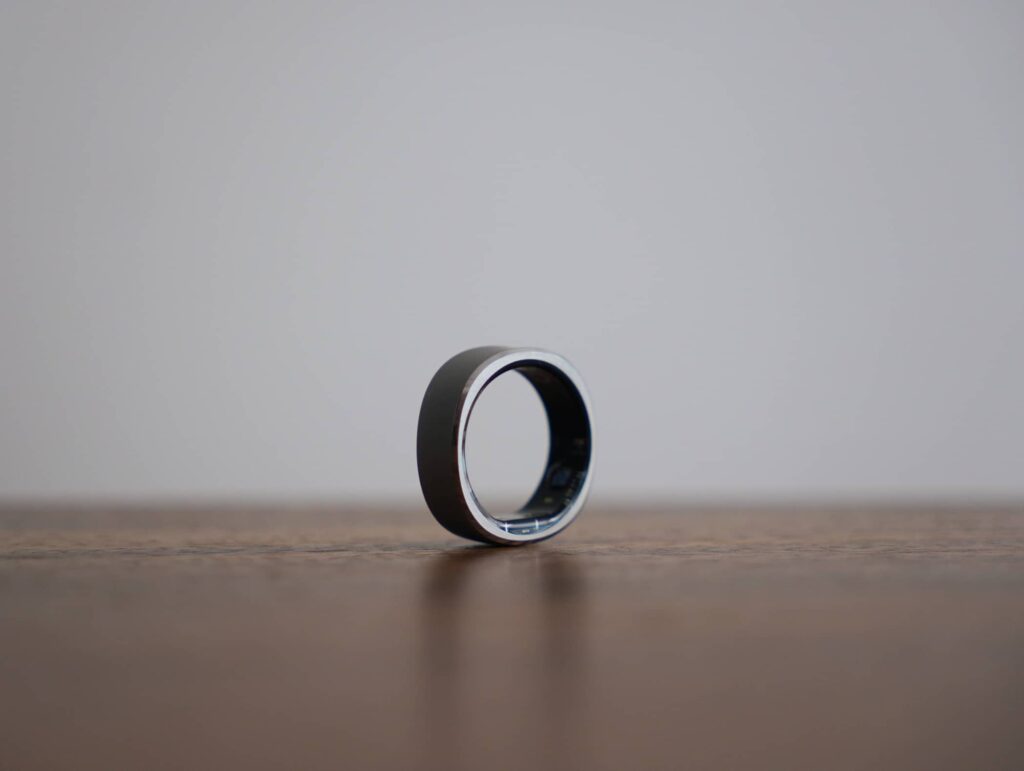
The Ringconn Smart Ring sits comfortably on my index finger, but I can definitely feel its presence on my finger as it is rather chunky due to the squarish shape. There are two raised sections on the inside, which houses the sensors and LEDs the comes in contact with your skin for health tracking. The LEDs can be quite bright, which can get slightly annoying when it is in our face when trying to sleep.
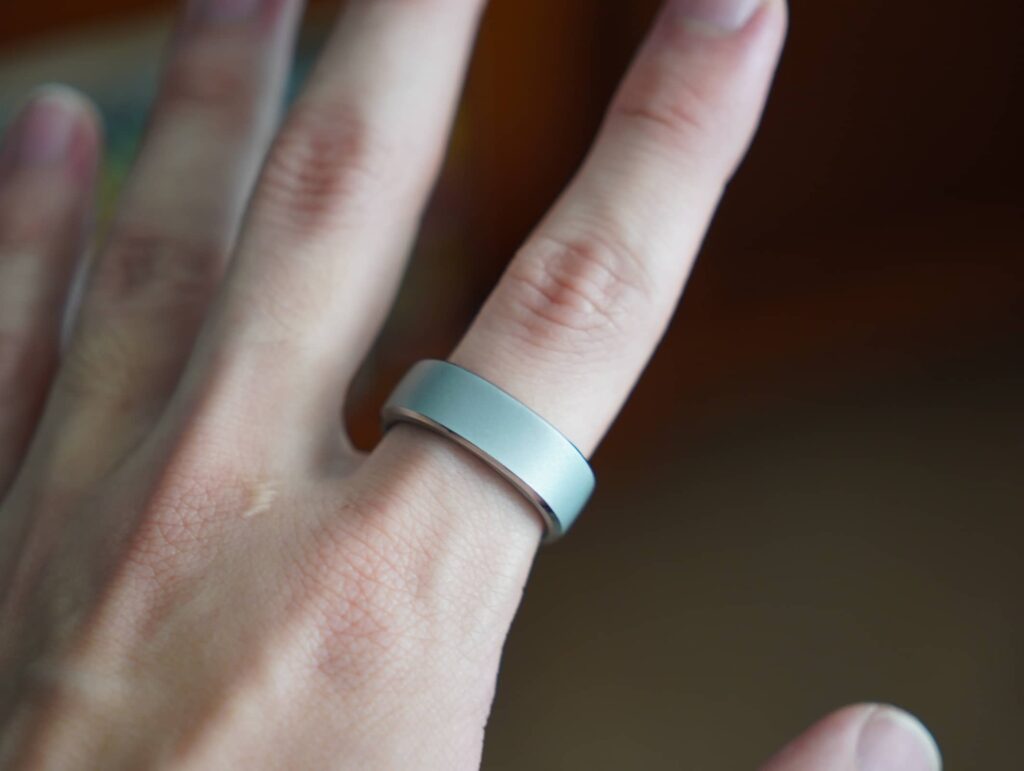
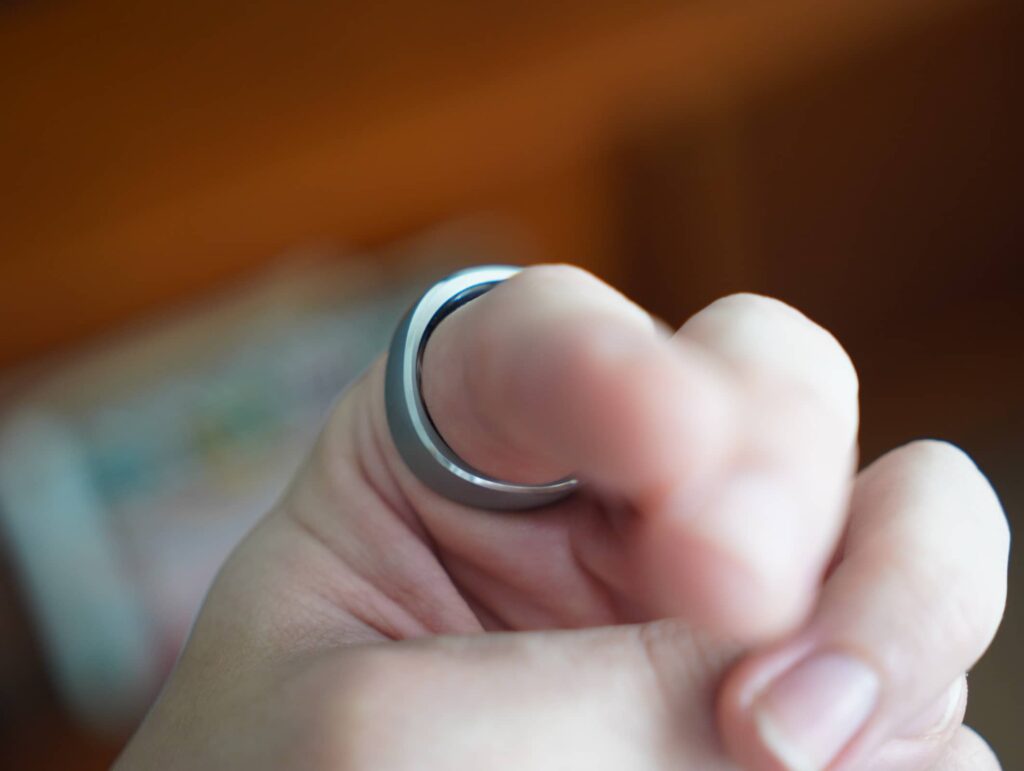
RingConn comes with a standalone charging case, which I prefer over using cable. To charge, you simply put the ring such that it aligns with the charging pins – as though you are charging a pair of wireless earbuds. The clamshell charger is convenient especially when travelling.
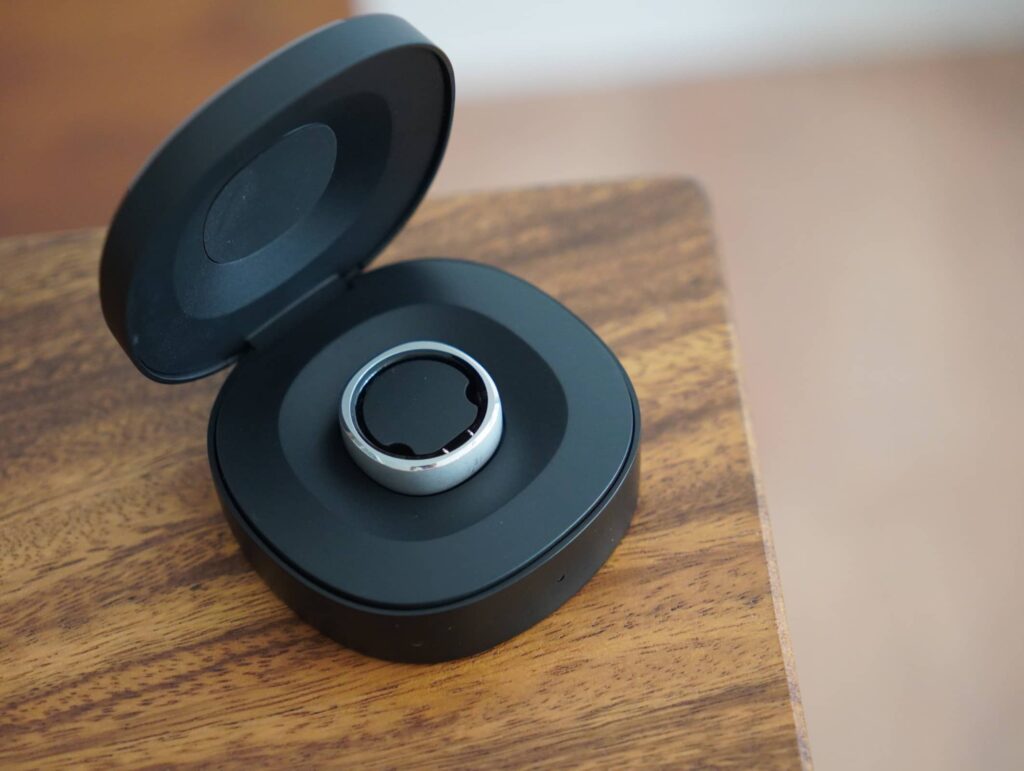
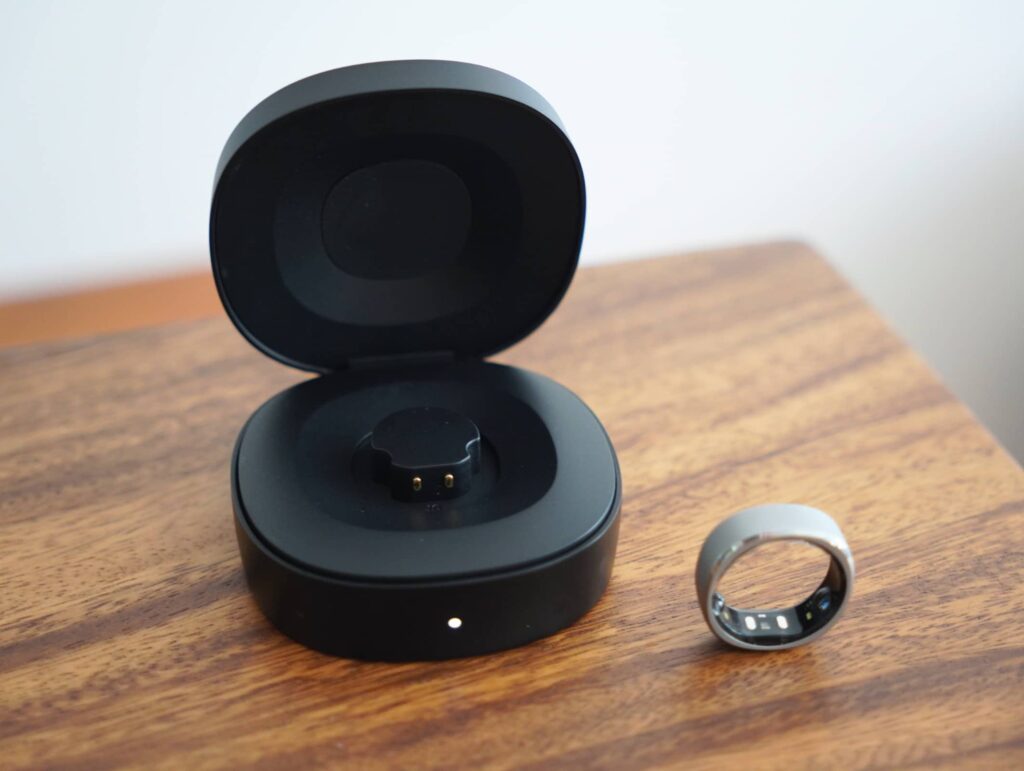
RingConn says the battery life of the smart ring lasts approximately seven days, which is close to what my experienced. The charging case also holds enough power to charge the smart ring for up to 150 days, which is rather impressive.
Health and fitness tracking
RingConn possesses the fundamentals of a smart ring – health tracking metrics of heart rate, blood oxygen saturation, steps (movement), as well as sleep tracker. It can also do fitness tracking, but without a display to choose your specific exercise, smart rings aren’t the go-to tech in this aspect.
Sleep tracking and Health metrics
Everything that is tracked by RingConn is summarized into four main pages. The first page, which is the Summary page offers a snapshot of the key metrics that useful. You can tap into further elements such as Vital Signs to see a trending graph of your heart rate and SpO2 for example.
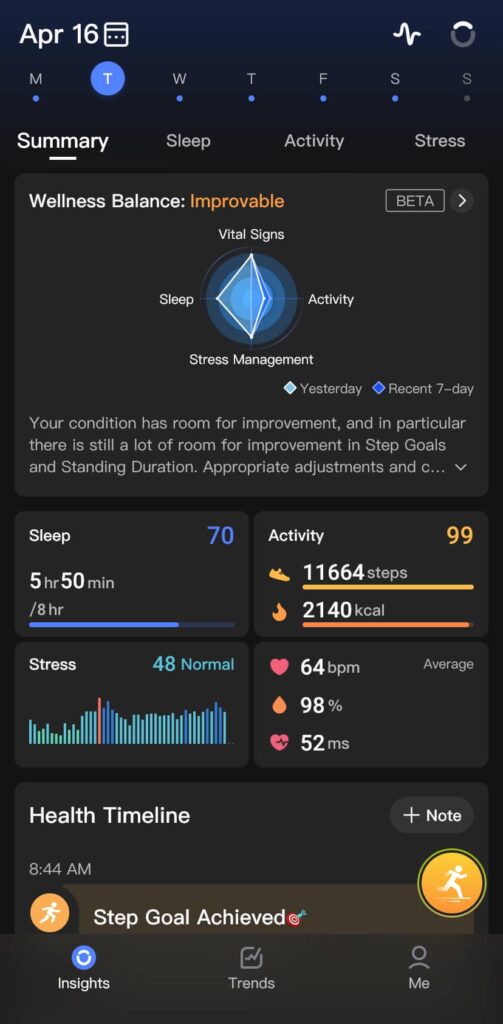
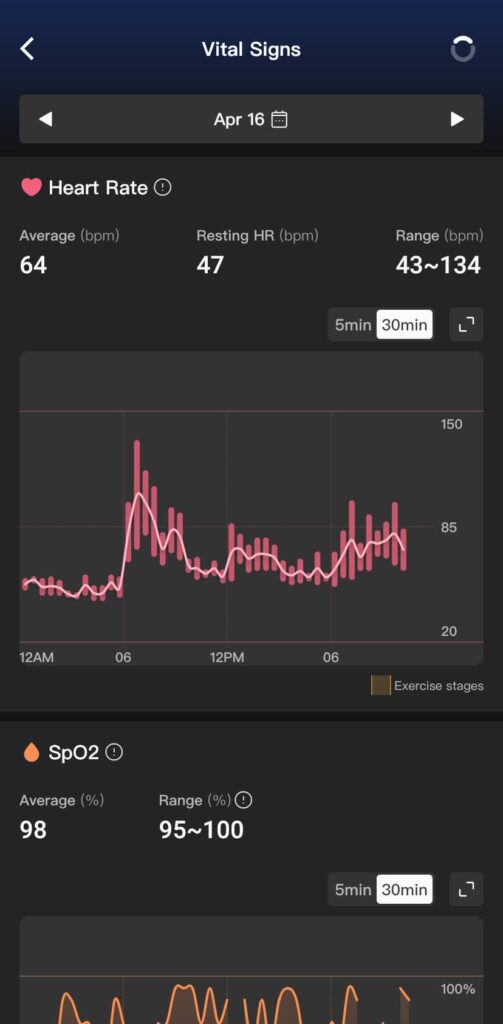
Smart rings are usually favoured over smartwatches as sleep trackers, and I’m glad to say that the RingConn does a great job at tracking my sleep. It is rather accurate and when compared to my Apple Watch Series 6 – the results are consistent. I have a daily alarm, and the RingConn is quite accurate at determining my time asleep.
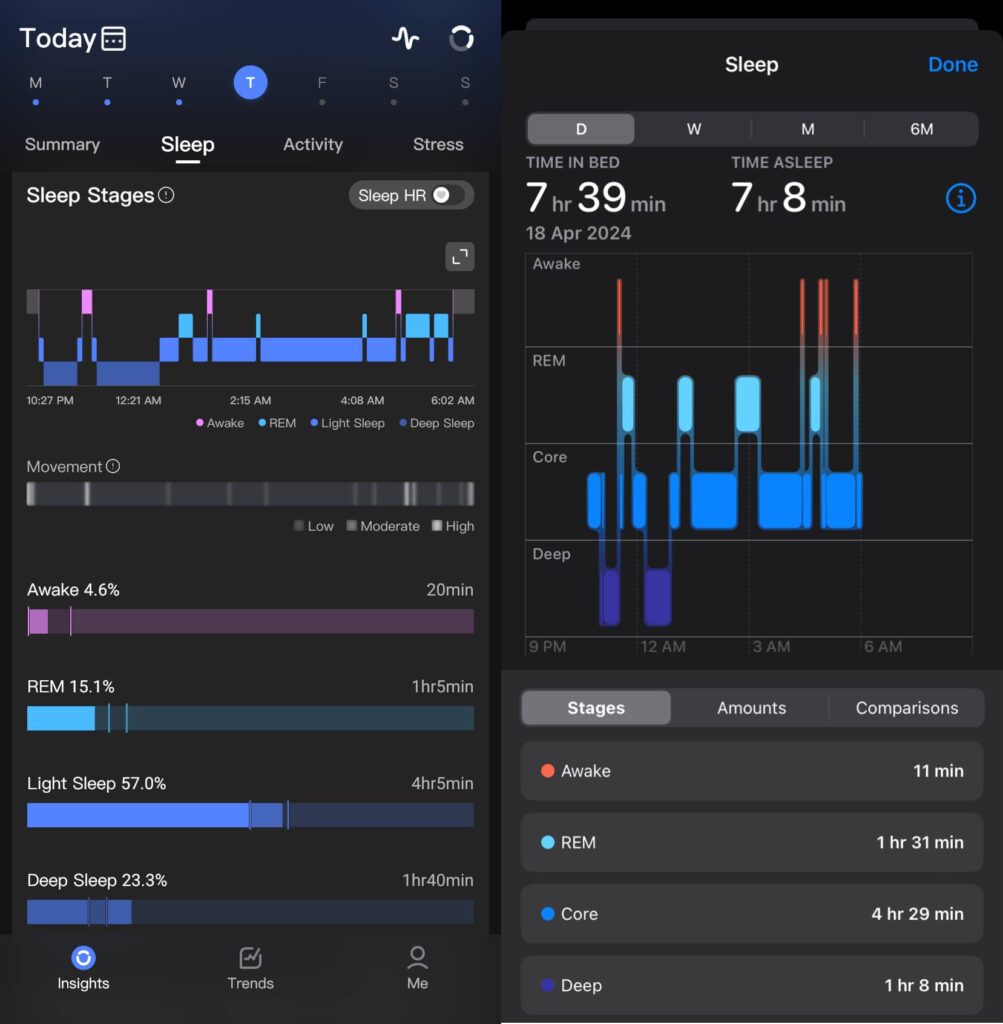
In terms of reporting, there are the usual sleep stages as well as useful insights such as sleep efficiency, sleep movement, respiratory rate, heart rate and SpO2 readings during my sleep. You also get a Sleep score which is good to know summary in case you find all the detailed metrics to overbearing.
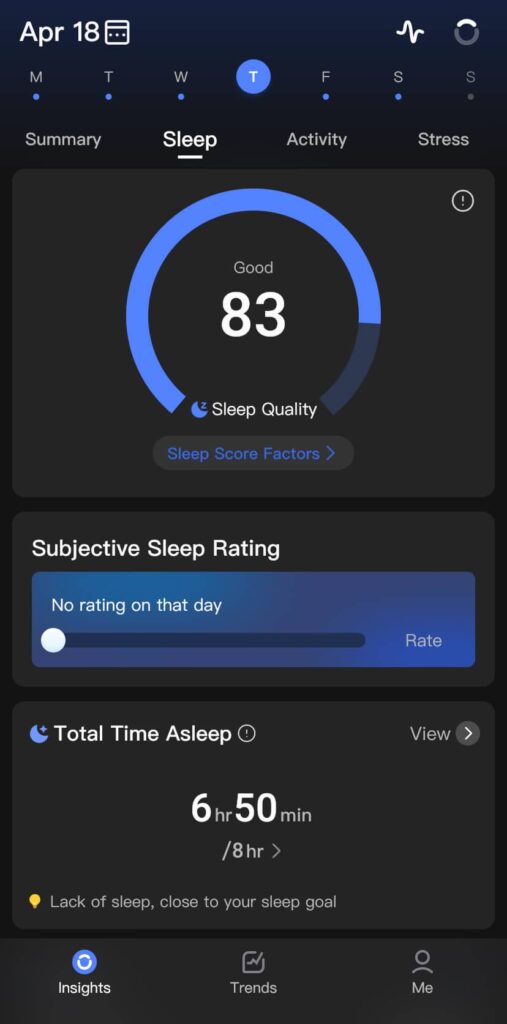
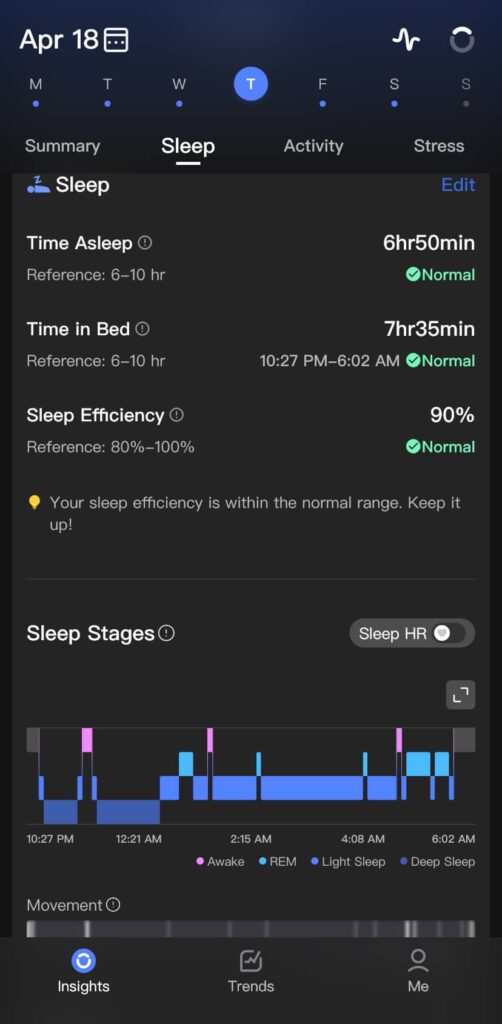
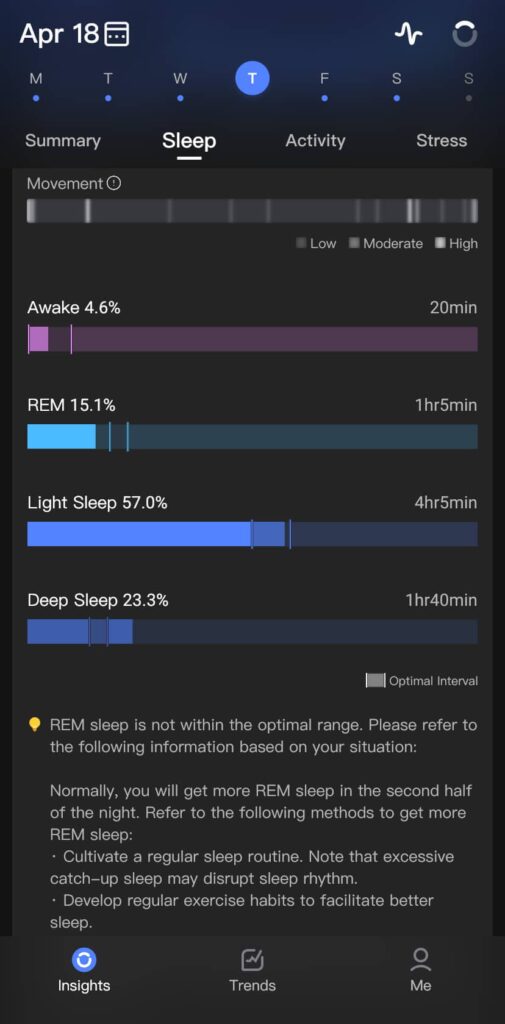
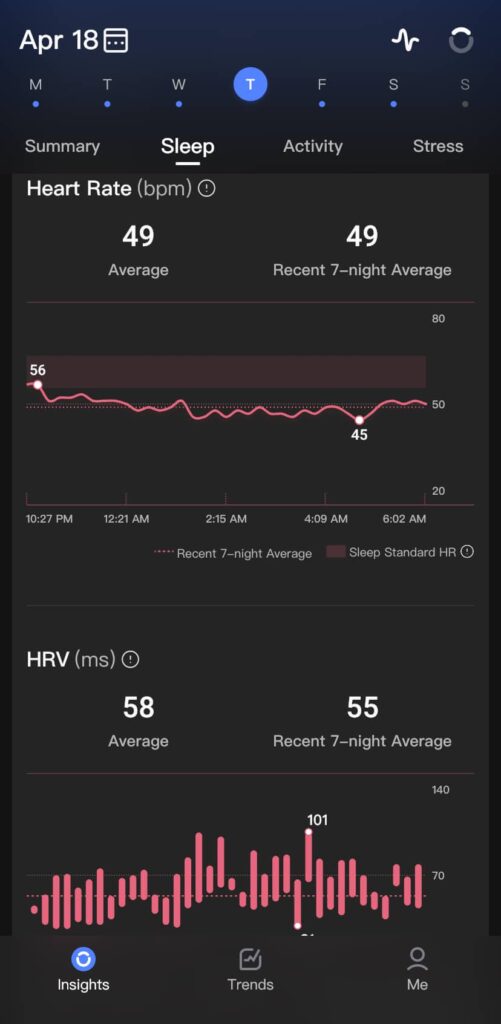
There is also a page that details your movement activity. In the page, you also get an overall score – higher means you met RingConn‘s predefined goals of an active lifestyle day, which usually entails clocking in more steps, burning more calories, and standing up often. There was a day I wore the RingConn to a HIIT class and I got score of 99 – so I guess it is a good measure to rely on. The charts on the Activity page are quite insightful. I found the Activity Intensity Ratio to be a good snapshot to evaluate my day.
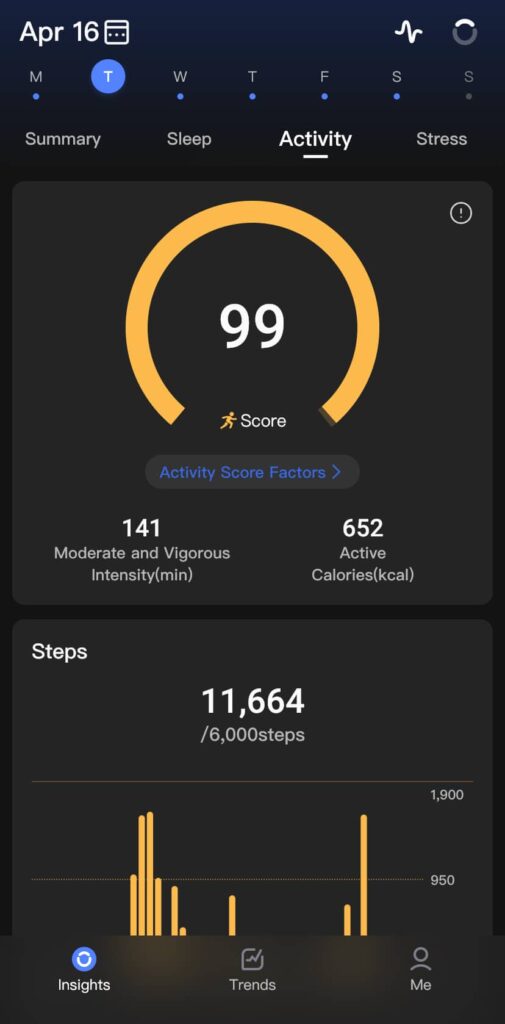
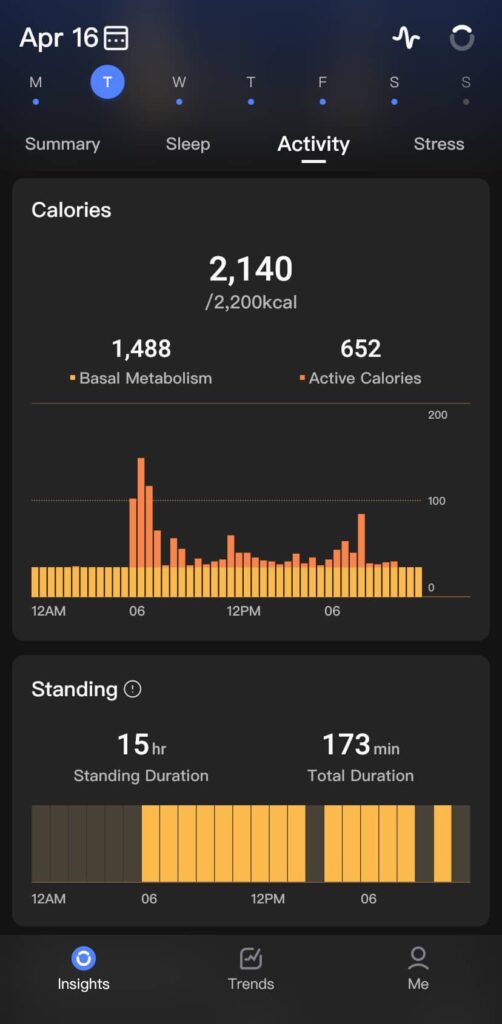
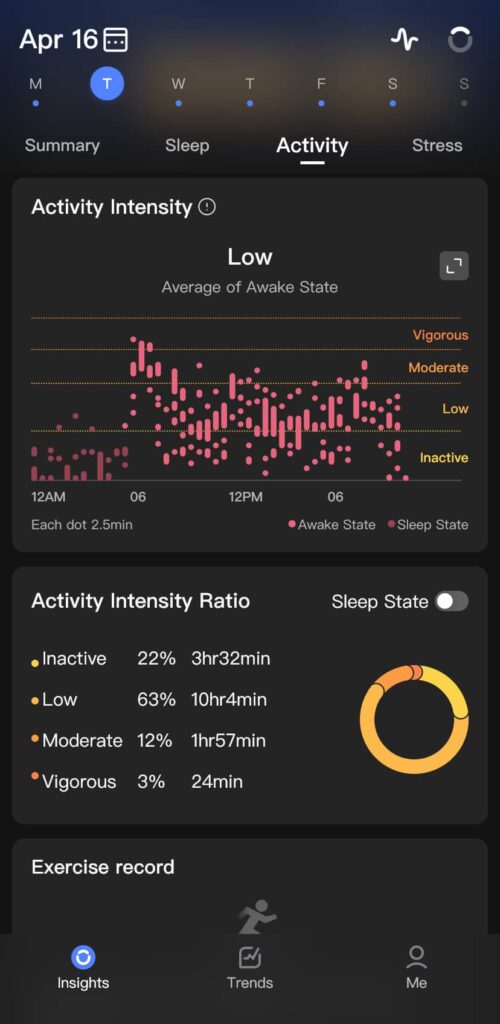
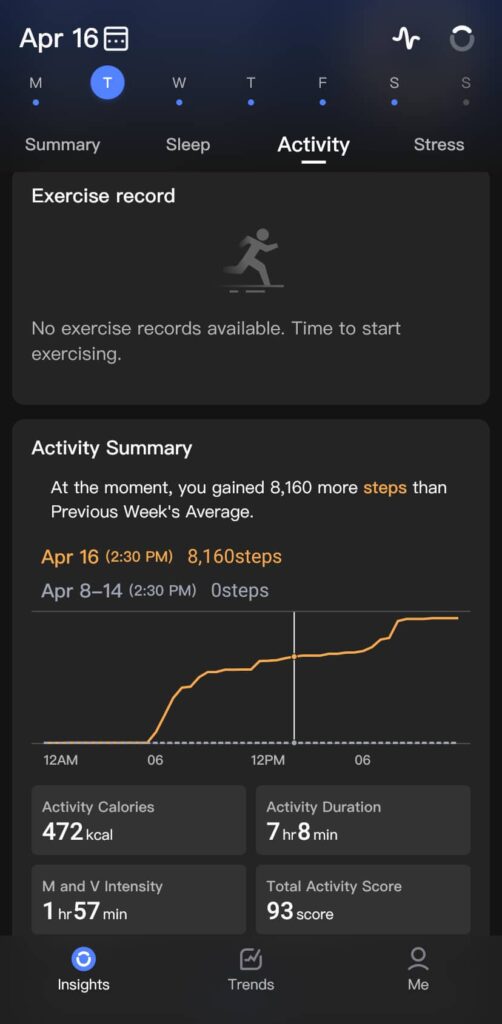
Lastly, you have a Stress page that summarizes the amount of stress you experienced in the day. The Stress Score is calculated via your heart rate and heart rate variability to determine if you are in a stressed or relaxed state. The insights in this page are interesting, I did see the higher stress levels reported when gaming so make what you will of it. In any case, it is still a good-to-have stat.
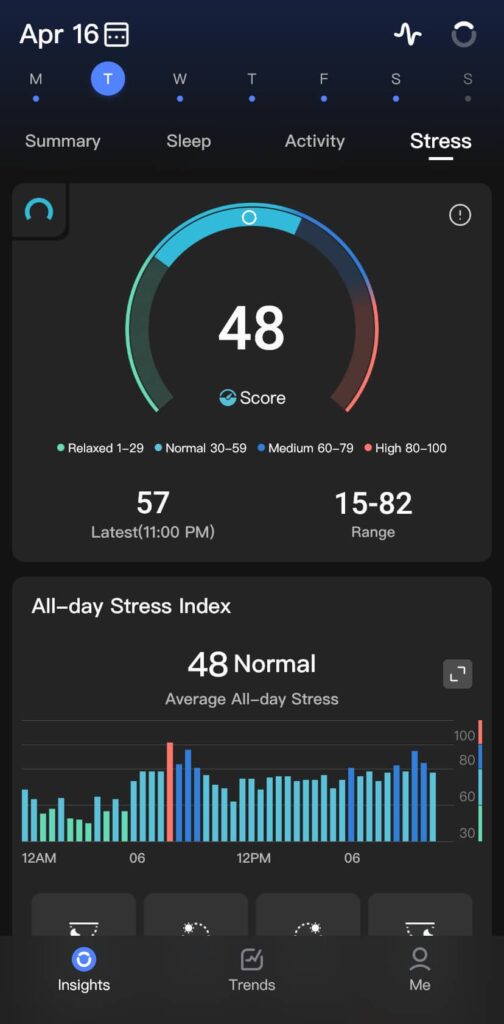
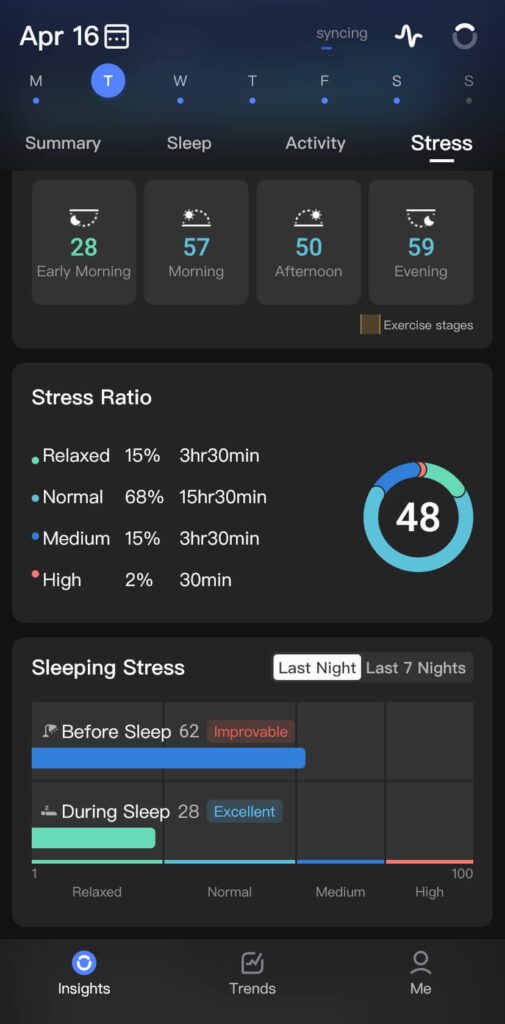
Exercise and fitness use case
I personally wouldn’t rely on RingConn or any smart ring for that matter for exercise tracking. While RingConn is able to detect that I had a higher than normal heart rate for 40 minutes, it did not log it as an exercise in the app. While there is an Exercise beta feature of selecting an exercise, there are only four exercises as of now.
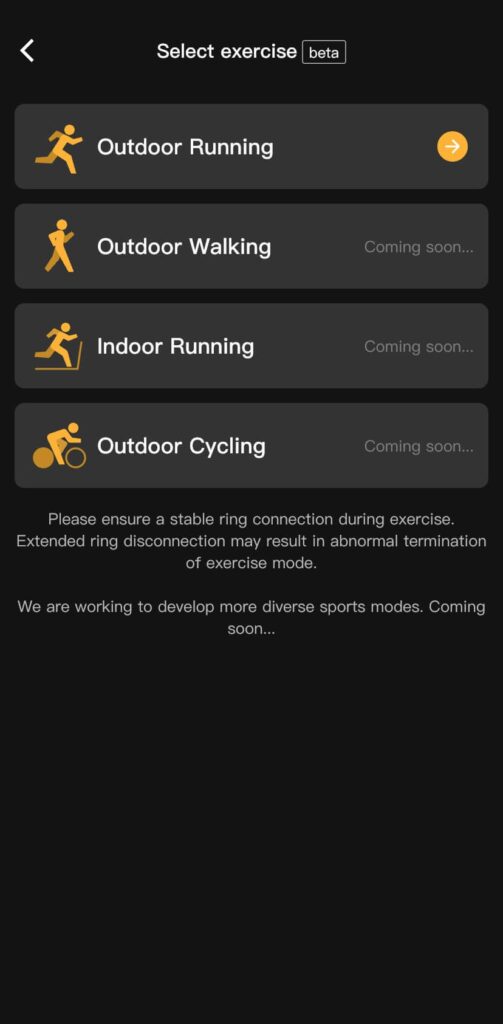
This also means that you’d likely have to bring your smartphone with you, which can be slight bummer if you are going for a run. For anything fitness related, a smartwatch is still a better tracker as the ability to select the type of exercise usually gives you a more tailored workout breakdown. I also did find the accuracy of the step counts slightly questionable as the variance when compared to my Apple Watch is quite far off.
Trends
The Trends tab is RingConn‘s attempt that providing personalized insights, or if any a sea of data for folks who enjoy data analysis. You can read a weekly or yearly report of the key metrics which do offer some suggestions. I haven’t used it consistently long enough to evaluate if these insights are useful but nonetheless it is good to have. You can see different metrics on a weekly, monthly, or yearly basis. There is a long list of data that you can filter out as favourites so that you can see the trends.
Conclusion
At US$279, the RingConn smart ring presents an affordable option for health tracking if you are in the market for a smart ring. Another factor that is important to highlight is that the insights you get from the app is completely free. Other brands such as Oura charges a subscription fee for full insights, albeit the competitors being able to provide more personalised health insights.
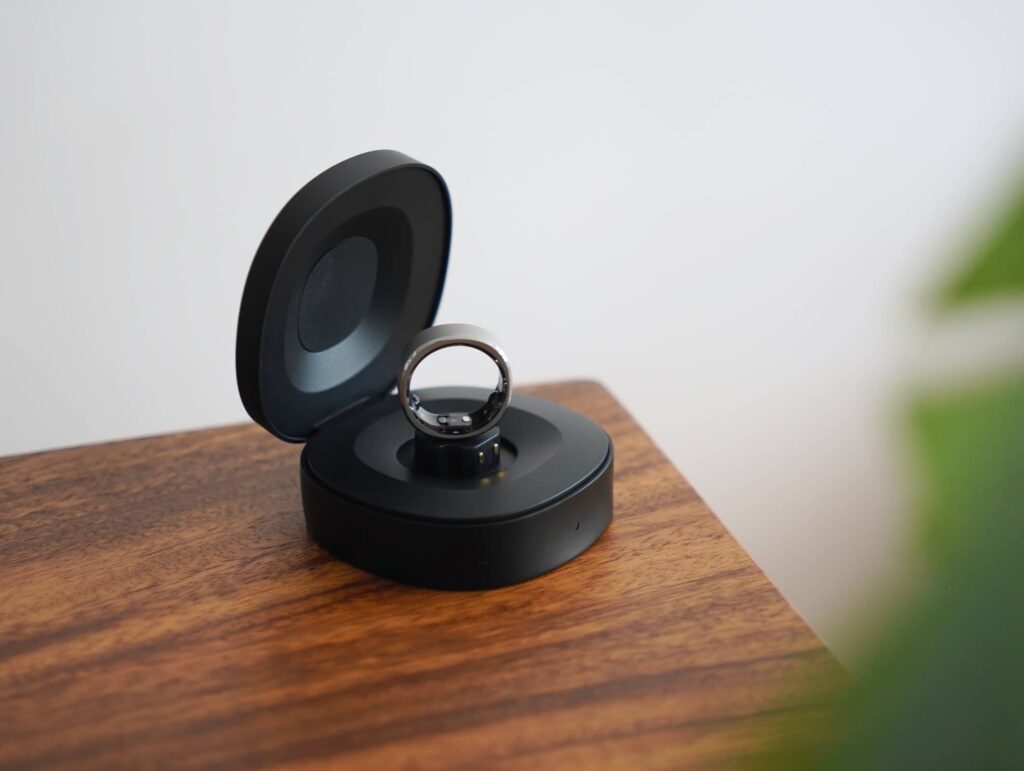
For a debut, RingConn does a great job at nailing some foundational tracking such as sleep and a great battery life, but could improve on the fitness aspect.

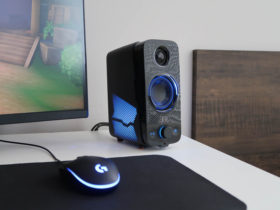
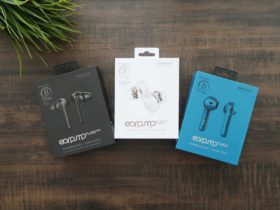
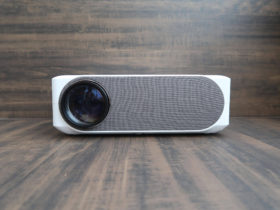

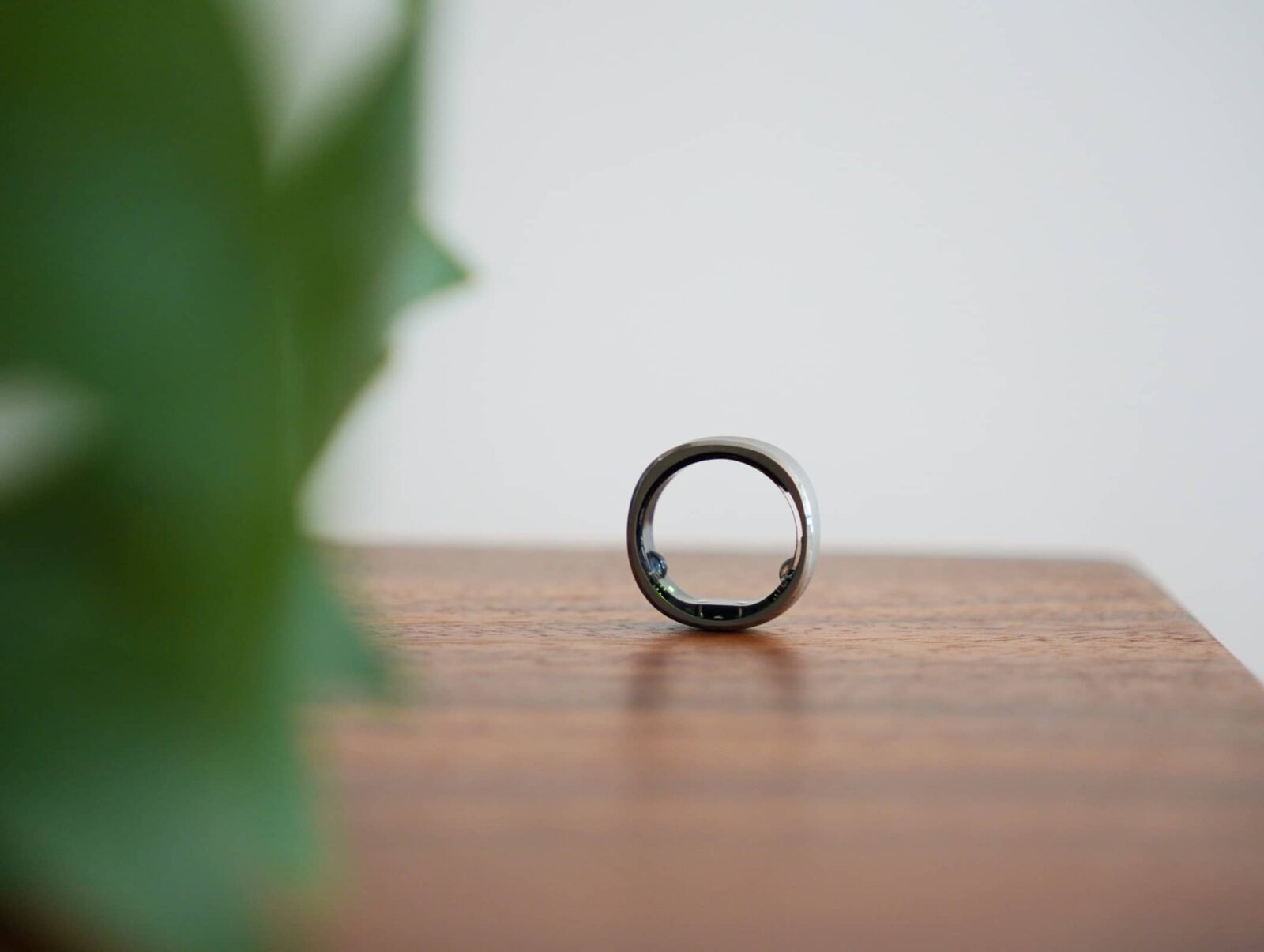
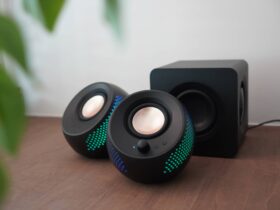



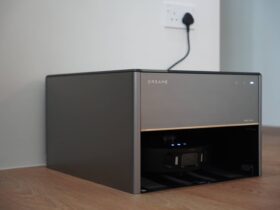
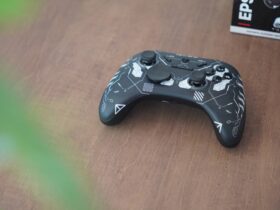
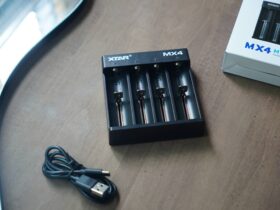
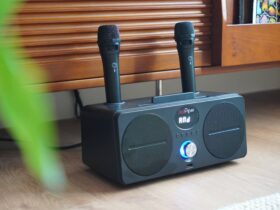
Leave a Reply